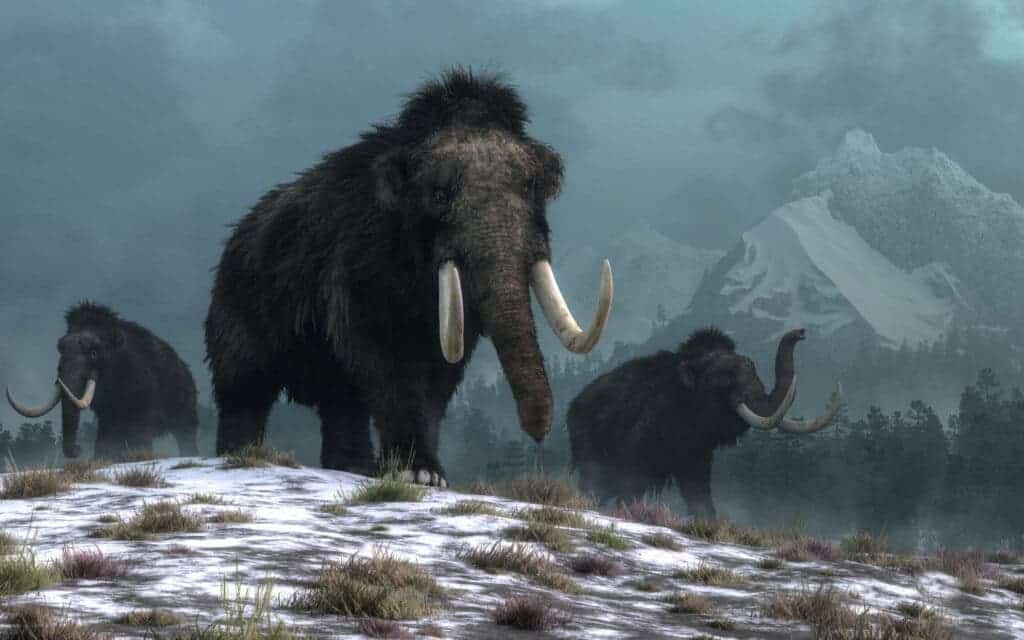
Human activity is responsible for an alarming decline in insects, vertebrates, plants, and just about almost any living thing you can think of. Extinction rates are up to 1,000 times greater than during pre-human times, which is why scientists refer to this rapid loss of biodiversity as the “sixth mass extinction”, alongside other mass extinctions owed to dinosaur-killing asteroids, massive planet-wide volcanic explosions, and catastrophic sea-level rise.
Given this ignoble track record, it’s not that surprising that whenever a species was found to have gone extinct around the same time people were also around, the finger was quickly pointed towards us as the dastardly culprits. Such has been the narrative, for instance, surrounding the extinction of the iconic Pleistocene megafauna, with the wooly mammoth’s sudden disappearance often serving as a prime example of humans’ wicked ways since prehistoric times.
After all, there is ample evidence that humans hunted mammoths, with butchered mammoth bones found in various caves known to be occupied by prehistoric hunter-gatherers. Some groups even used the sturdy mammoth bones to construct peculiar, occult-like circular structures, some made from the remains of dozens of individuals.
But studies from the last decade or so, supported by various climatological and genetic evidence, have painted a different picture, suggesting that mammoths may have gone extinct regardless of whether or not humans ever existed. A new study, perhaps the most comprehensive of its kind, absolves humans, concluding that rapid climate change owing to the end of the last Ice Age doomed the mammoths with no chance of appeal.
Whilst the last mammoths survived up until 4,000 years ago on the remote Wrangel Island in the Arctic Ocean, the vast majority of mammoths living in the rest of the world were wiped out around 10,000 years ago.
The mammoth decline was fast, on a geological time frame, starting around 12,000 years ago when glaciers that covered vast ranges of the Northern Hemisphere melted. That’s no coincidence, according to the findings of decade-long research led by Professor Eske Willerslev, a Fellow of St John’s College, University of Cambridge, and director of The Lundbeck Foundation GeoGenetics Centre at the University of Copenhagen.
Wilerslev and colleagues analyzed the DNA of biological samples collected over a period of 20 years from over 200 sites across the Arctic region where mammoth remains were found. The samples span the last 50,000 years and included plant and animal remains, including urine, feces, and skin cells. The same technique had been previously used to detect and track COVID-19 cases indirectly from the sewage of human populations.
This massive dataset of environmental DNA was compared with genetic information from 1,500 modern plant genomes that were sequenced by the international team.
This analysis showed that as the glaciers melted, the onset of a much warmer and wetter climate rapidly displaced the brush vegetation that mammoths used to graze on, replacing it with trees and wetland plants. This change occurred much faster than the mammoth herds could adapt to, thereby ending an evolutionary legacy spanning four million years.
“Scientists have argued for 100 years about why mammoths went extinct. Humans have been blamed because the animals had survived for millions of years without climate change killing them off before, but when they lived alongside humans they didn’t last long and we were accused of hunting them to death,” Professor Willerslev said.
“We have finally been able to prove was that it was not just the climate changing that was the problem, but the speed of it that was the final nail in the coffin—they were not able to adapt quickly enough when the landscape dramatically transformed and their food became scarce.”
The mammoth extinction did not occur instantly. Instead, their numbers slowly trickled down as food became increasingly scarce. In time, their genetic diversity also suffered since there were fewer individuals, leading to an increase in inbreeding. The loss of genetic diversity made them even more vulnerable to wild shifts in temperature, food resources, and diseases.
“When the climate got wetter and the ice began to melt it led to the formation of lakes, rivers, and marshes. The ecosystem changed and the biomass of the vegetation reduced and would not have been able to sustain the herds of mammoths. We have shown that climate change, specifically precipitation, directly drives the change in the vegetation—humans had no impact on them at all based on our models,” said Dr. Yucheng Wang, first author of the paper and a Research Associate at the Department of Zoology, University of Cambridge.
Although other extinct megafauna did not constitute the object of the present study, it is likely that the same environmental forces may explain the demise of other species, such as the woolly rhinoceroses and Pleistocene horses. Many of these species’ demise were also previously associated with overkilling by humans.
“This is a stark lesson from history and shows how unpredictable climate change is—once something is lost, there is no going back. Precipitation was the cause of the extinction of woolly mammoths through the changes to plants. The change happened so quickly that they could not adapt and evolve to survive,” Willerslev said.
In September, scientists in the field of genetic engineering proposed resurrecting the wooly mammoth under a new project called Colossal.



